Forty years ago, Pennsylvania declared that it was in the public’s interest to preserve and enhance native wild resources, including non-game animals and wild plants.
The Wild Resource Conservation Act was passed on June 23, 1982, allowing the public to contribute to a special fund -- the Wild Resource Conservation Fund -- to protect and conserve these resources.
The Wild Resource Conservation Program was born!
The Wild Resource Conservation Program works across multiple agencies for the benefit of all kinds of wildlife and plant species.
The Department of Conservation and Natural Resources directs the program and works closely with the Pennsylvania Game Commission and the Pennsylvania Fish and Boat Commission.
The Wild Resource Conservation Board makes official decisions on the use of the funds.
Reintroduced Species in Pennsylvania

Osprey
Many charismatic species can be seen today in Pennsylvania thanks to early efforts by the Wild Resource Conservation Program to fund their reintroduction.
Two examples are the northern river otter (Lontra canadensis) and the osprey (Pandion haliaetus).
According to the Pennsylvania Game Commission, the river otter is the most elusive aquatic mammal in Pennsylvania and its resurgence in North America is one of the greatest success stories of modern wildlife conservation.
Before colonization, river otters were found in every major watershed of Pennsylvania. But by the mid-1900s, habitat destruction, water pollution, and unregulated harvest had removed the species from much of its former range -- including all of the commonwealth, except the northeastern corner.
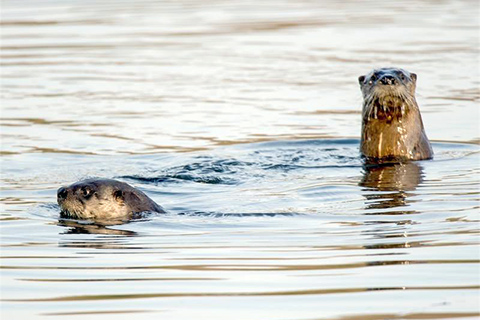
River otters
As a result of reintroduction efforts, legal protection, improved habitat quality, and regulated harvest, otter populations rebounded during the mid- to late 1900s.
From 1982-2004, the Pennsylvania River Otter Reintroduction Project released 153 otters into eight water systems in central and western Pennsylvania. The otters came from Louisiana, Maryland, Michigan, New Hampshire, New Jersey, New York, and the remaining native population in northeastern Pennsylvania.
Today, otter populations in Pennsylvania are increasing or stable across their range. The densest otter populations occur in the northwestern and northeastern counties.
Accomplishments of the Wild Resource Conservation Program
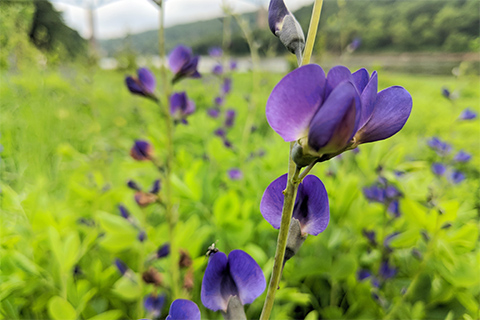
Blue False Indigo (Baptisia australis)
The Wild Resource Conservation Program funds research and conservation projects across the commonwealth through a grant program supported by the Wild Resource Conservation Fund. It is the only source of state funding for plant conservation in Pennsylvania.
The Wild Resource Conservation Fund has:
- Funded almost 300 projects since 1987;
- Provided almost $9 million in funding for projects;
- Covered a wide array of project topics, from crayfish biology to lichen diversity, from endangered plants to secretive marsh birds; and
- Funded about 10 projects annually.
Much of the focus of the Wild Resource Conservation Program is to fund projects to prevent species from becoming extirpated, or gone completely. Keeping what we have secure is important when you consider all of the other species that are connected.
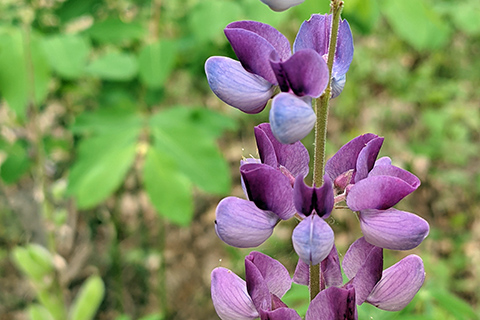
Sundial lupine (Lupine perennis)
Many plant species have been the subject of research that recently includes genetic research. Funded by the program, Blue False Indigo (Baptisia australis), Sea Oats (Chasmanthium latifolium), and Sundial lupine (Lupine perennis) are recent examples of plants that we can save from extirpation through genetic and other research.
Donate to Conserve Wild Resources
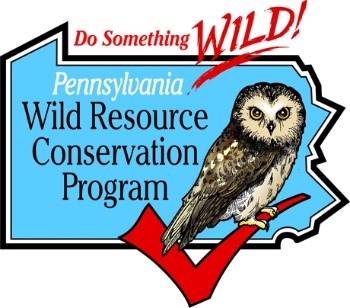
There are many ways to donate to the Wild Resources Conservation Program to help Pennsylvania Threatened and Endangered species.
All donations go directly into the fund for projects. The fund gets donations from children’s birthday parties, community service, memorial contributions, and even estate planning. To contribute to the fund, mail a check payable to:
Wild Resource Conservation Program
Bureau of Forestry
400 Market Street, 6th floor
Harrisburg, PA 17105-8552
Another way the Wild Resource Conservation Program receives funds from Pennsylvania citizens is the Pennsylvania tax-checkoff.
You can donate your tax refund when filing electronically to help the Wild Resource Conservation Program protect plants and non-game wildlife.
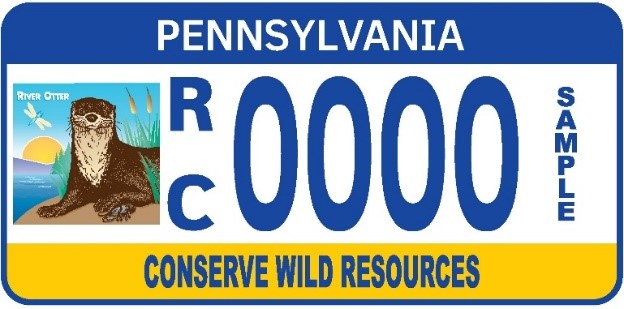
Purchasing a river otter specialty license plate also provides support for the fund.
This special fund license plate was first made available in 1999 with the northern saw-whet owl, which was designed by Ned Smith and doubles as the program’s logo.
Discussions are ongoing regarding development of a new license plate for the future.
The Wild Resource Conservation Program and the special fund are great ways that Pennsylvania citizens can get involved in the conservation of their wild resources!